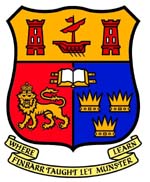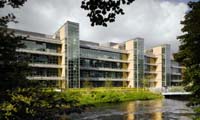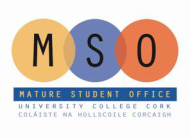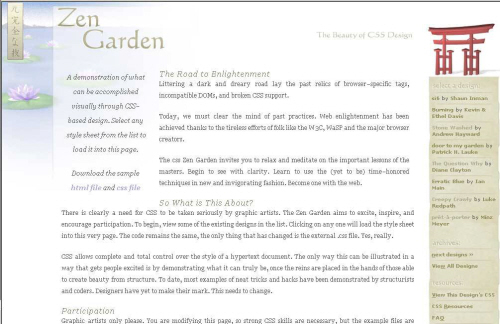

FREQUENTLY ASKED QUESTIONS
The following questions and answers are divided into different sections, the different sections are listed in the left column.
GENERAL FAQ
UCC Computer Science department has a very good FAQ section and can be found by following this linkhttp://www.cs.ucc.ie/courses/prospective.php.
UCC FAQ
Q . Where can I find maps of the campus ?
A . Follow this link:http://www.ucc.ie/en/visitors/maps/.
Q . What is UCC SIT and where can I find it ?
A . SIT stands for Student Information Technology and is the main website for most student needs, using your login and password you can access registration, examination and financial information relating to you. Follow this link to find it:http://www.ucc.ie/en/sit/.
Q . I hear people talking about Boole, what is it ?
A . Boole relates to the Campus Library named afterGeorge Boole. Follow this link:http://booleweb.ucc.ie/.
Q . What is the Quad ?
A . This is the Quadrangle infront of the Boole Library behind the original University buildingGeorge Boole.
Q . I hear people talking about Boole, what is it ?
A . Boole relates to the Campus Library named afterGeorge Boole. Follow this link:http://booleweb.ucc.ie/index.php?pageID=1.
Go To Top
CS1101
Q . What is CS1101 ?
A . CS1101 or Systems Organisation is the study of the basics of Computer Science, from bits and bytes to computer software and hardware. Follow this link for the full description in the book of modules:http://www.ucc.ie/modules/descriptions/page014.html#CS1101.
Q . What is Samphire ?
A . Samphire simulates the functions of a microprocessor, it is used in the labs and is used in the assignment. Follow this link to download a copy of Samphire to practice at home:http://www.samphire.demon.co.uk/.
Q . Are there notes online for this module ?
A . Professor Morrison does not put his lecture notes online so attend the lectures and take notes.
Q . Are there any books that can help me understand this module ?
A . Structured Computer Organization by Andrew S. Tanenbaum provides the material used in this module, but it is not required for the course. Click the link in the left column for books for more information.
Q . What is ASCII ?
A . ASCII or the American Standard Code for Information Interchange is the character-encoding scheme based on the ordering of the English alphabet (source Wikipedia). When you type a character on your keyboard it is converted to machine code i.e. Binary. To see what the ASCII Table looks like click here.
Go To Top
CS1105
Q . What is CS1105 ?
A . CS1105 or The Foundations of Computer Science is all about Algorithms, Sets and Collections, Sentential logic and Logic Follow this link for the Book of Moules description:http://www.ucc.ie/modules/descriptions/page014.html#CS1105.
Q . What is a Truth Table ?
A . A Truth Table is a "table showing all possible truth-values for an expression" (Wikipedia) i.e. True or False / One or Zero / On or Off. Follow this link for more information:http://whatis.techtarget.com/definition/0,,sid9_gci776118,00.html.
Q . What is a Hasse Diagram ?
A . A Hasse Diagram "is a type of mathematical diagram used to represent a finite partially ordered set, in the form of a drawing of its transitive reduction" (Wikipedia). This probably does not make it any clearer but CS1105 is all about problem solving (in fact all of Computer Science is) so if you have a problem with understanding this then research. The following is a good place to start:Site 1, Site 2.
Q . I have heard there are strange symbols used, what are they all about ?
A . In CS1105 ( and CS1106 ) you will see things like the images below, dont worry they look hard but are in fact quite manageable. It is all about Union, Intersection, Difference and Subset. Look up wikipedia on Sets for further information ( select the option on Computer Science ). Click here for an online PDF on Set Theory :Discrete Mathematics: Set Theory for Computer Science.
Q . Is there Mathematics ?
A . A form of mathematics called Discrete Mathematics is used in CS1105. Click here for more information on Discrete Mathematics Ask A Scientist or hereWolfram MathWorld.
Go To Top
CS1106
Q . What is CS1106 ?
A . CS1106 is the Introduction to Relational Databases module, it concentrates on using MySQL. Using an SSH application like PuTTY the user with try and find specific entries in the tables on the server. Book of Modules description:http://www.ucc.ie/modules/descriptions/page014.html#CS1106.
Q . What is MySQL ?
A . MySQL is "an open source relational database management system" (source Google Define). Follow this link to the MySQL website:http://www.mysql.com/.
Q . What are queries in relation to this module ?
A . A query is information that is entered into the program to return a specific response. An example of a typical query is: SELECT maker, speed FROM Laptop, Product WHERE Laptop.model = Product.model AND hd >= 30;. For more information on queries go here:http://www.smartwebby.com/PHP/mysqlquery.asp.
Q . What is SSH ?
A . "Secure Shell or SSH is a network protocol that allows data to be exchanged using a secure channel between two networked devices"(source Google Define).Go here for more infohttp://kimmo.suominen.com/docs/ssh/ or here http://www.colorado.edu/its/docs/authenticate/printouts/win_ssh.html. If you want a free SSH program called PuTTY then go here:http://www.chiark.greenend.org.uk/~sgtatham/putty/.
Q . Is there a textbook ?
A . It is recommended that you buy - A First Course in Database Systems by Jeffrey D. Ullman, Jennifer Widom. It is an expensive book so shop around online.Amazon has used copies at reasonable prices.
Go To Top
CS1107
Q . What is CS1107 ?
A . CS1107 or Introduction to Multimedia Authoring Systems, is all about creating and editing images and using different software to accomplish this. Follow this link for a full description in the Book of Modules:http://www.ucc.ie/modules/descriptions/CS.html#CS1107.
Q . What advice to you give for this module ?
A . Rule 1: DO NOT TOUCH THE KEYBOARD ! during Professor Bowens lecture unless you want to be treated like your a ten year old. While this module starts off pretty simple (if you have used Photoshop or Serif) it does get harder, when creating images using a HEX editor and PHP.
Q . What software will we be using ?
A . For photo editing you will be using Serif Photoplus, you will be using XVI32 for the HEX and Notepad++ for the PHP. Links to these software are provided in theCOMPUTER section of this website.
Q . Are the in-class tests hard ?
A . Should easily pass this module if you attend the lectures and labratories
Q . What about the assignments ?
A . When coming up to Christmas, you will be given four assignments and again they are managable if you attended the lectures and labs.
Go To Top
CS1109
Q . What is CS1109 ?
A . CS1109 or Programming and Web Development is the most important module this year (it is worth 15 credits) and will concentrate on programming (which in 2010/2011 was PHP) but the year will start off with a few week of XHTML and CSS. Follow this link for a full description in the Book of Modules:http://www.ucc.ie/modules/descriptions/CS.html#CS1109.
Q . What is XHTML ?
A . XHTML (eXtensible HyperText Markup Language) is part of the XML markup languages and is an extension of the Hypertext Markup Language (HTML), this is what webpages are written in. Follow this link to find it:http://en.wikipedia.org/wiki/XHTML.
Q . What is CSS ?
A . CSS stands for Cascading Style Sheets and this used to make your webpages look nice, the XHTML is text and the CSS a way of making the webpage look like a webpage. If you want to see what CSS is capable of then click the image above (Zen Garden). For more information, follow these links:http://en.wikipedia.org/wiki/Cascading_Style_Sheets, http://www.w3.org/Style/CSS/current-work, http://lesliefranke.com/files/reference/csscheatsheet.html, http://www.quirksmode.org/compatibility.html and finallyhttp://www.deepbluesky.com/blog/-/browser-support-for-css3-and-html5_72/.
Q . What is the PHP ?
A . PHP or PHP: Hypertext Preprocessor is the programming language you will be using in this module. It can be fairly tricky at times but should pose no real problems as you will have weekly assignments to practice it. If you want more information then visit these sites:http://www.php.net/,http://www.w3schools.com/php/default.asp,http://php.resourceindex.com/ and http://php.ie/,
Q . Validate, what does it mean ?
A . All webpages you create MUST pass W3 Markup rules to be a valid Strict XHTML webpage, this goes the same for CSS. At the bottom of the left hand column you can see two logos, one for XHTML and one for CSS: this logos mean that the webpage has passed both XHTML and CSS Validator checks (click them to see !). To Validate your HTML or CSS then add the Web Developer Toolbar in Firefox or clickhere.
Go To Top
OTHER
Q . What is the Western Gateway Building ?
A . The Western Gateway Building or WGB is the home of Computer Science and Mathematics and it it where you will spend the next four years of your life. The Western Gateway Building is located approximately five minutes away from the Main Campus on the Western Road. The following link contains room layouts of the building:http://www.ucc.ie/en/conferencing/facilities/room-rates/WesternGatewayBuilding/.
Q . What will my first day (Induction) consist of ?
A . On your first day all the Undergrads will meet in one of the Boole Theatres where the President and Students Union will welcome you to the college, the class will be divided up into groups, after which they will be brought for a tour of the Library (including a lecture on Booleweb, the library website) and given a computer training lecture (on SIT and Umail). You will then be brought to the Kane Building where you will get your ID and a student pack ( Free Stuff !).
Q . What is a Mentor ?
A . Every student will be assigned a mentor on their first offical day of college, the mentor is there to help you if you are experiencing difficulty. Be honest when meeting with your mentor, if you lie and say everything is fine then your not getting the benefit of his experience.
Q . Where do I go to log into my Student Email ?
A . Click this link:Student Umail Account Login.
Q . Where is the nearest bank to the Western Gateway ?
A . The AIB are located just cross the Western Road, come out the main gate, turn left and it is at the top by the traffic lights.
Q . Where can I get something to eat ?
A . There is a restaurant and shop in the WGB, there is a Centra and Subway located by the Victoria Mills student accomodation apartments. You can also go up to the Main Campus where there are numerous places to get food.
Q . Is university like school ?
A . Yes and No, in school the learning is complusary i.e. the teacher gets in trouble if the class fails, but in university the learning is all on you. You are given lectures and if you dont understand you better learn it, while the lecturers will help you they will not be bothered if they gave a lecture on the subject but you missed it. So attend all lectures and labratories, if you want to pass. Some lecturers take attendance, but this is for your benefit in a case where you need a few marks to pass their module they will check your attendance.
Q . What is dual-boot ?
A . The computers in G20 (and the rest of the Western Gateway as far as I know) are dual-boot, meaning that both Windows and Linux are installed, you can use which ever you wish to do your work on. You can select your desired Operating System at start-up.
Q . What about student fees ?
A . In 2010/11 this was €1650. The student capitation fee is ever increasing, the 2010/11 Budget increased these fees by €500, the student grant can help with this.
Go To Top
CONCLUSION
While every effort has been made to answer as many questions that you many need answered, it is not possible to answer them all. If you have any question not listed here then contact theComputer Science Department or the mainUniversity reception for information.
You can also contact me by clicking the email link in the left column or by clicking here to email me.
Go To Top




























